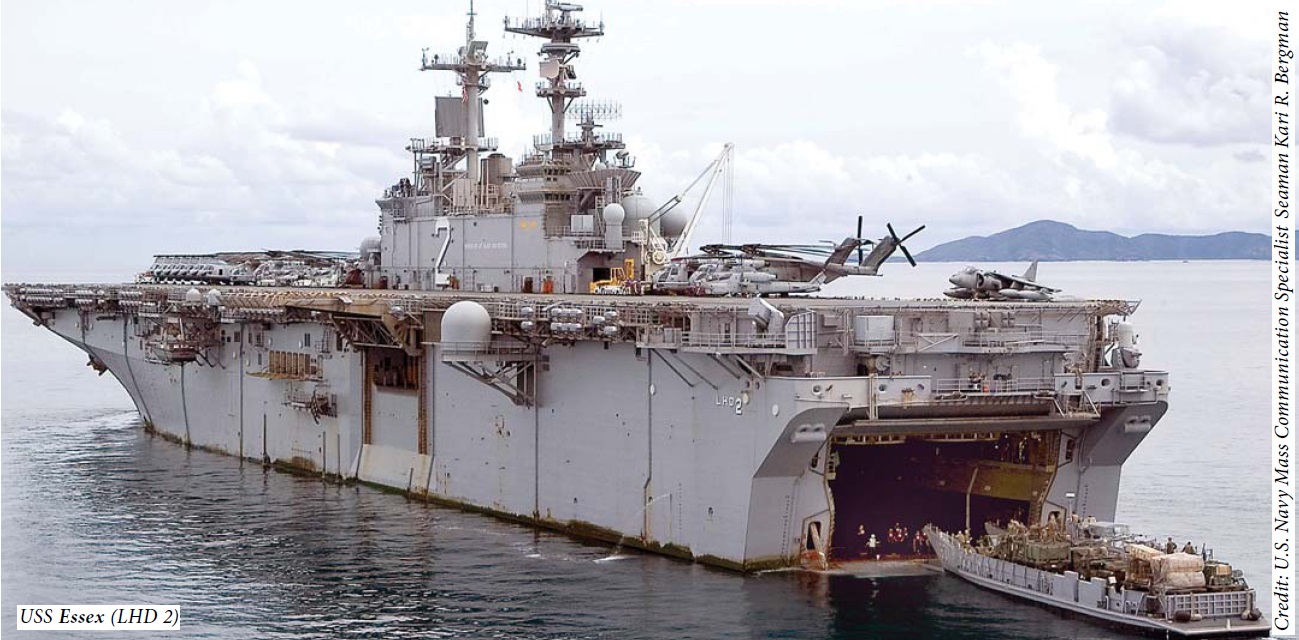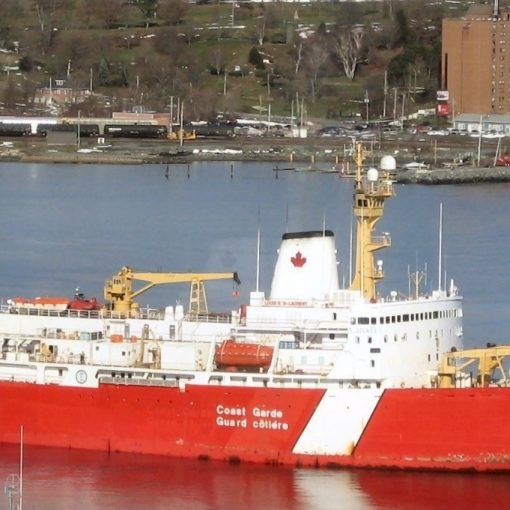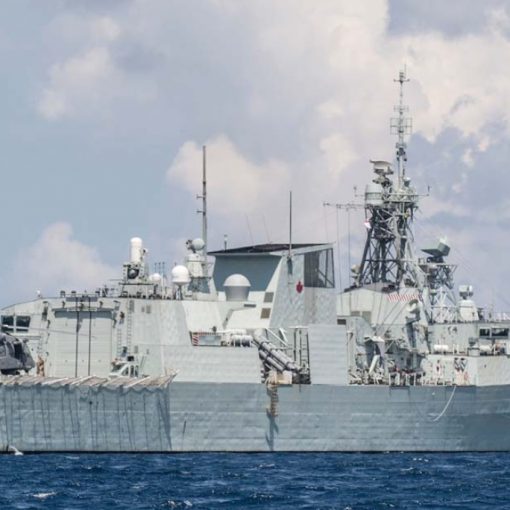Robin Allan refers to the requirement as a "Big Honking Ship". The term is somewhat overly generous.
The projected full load displacement of the JSS is about 28,000 tons, about 3,000 tons greater than the new US Navy San Antonio-class LPD, about the same for the Spanish Navantia LHD design, and 7,000 tons greater than the French Mistral/Tonnerre LPH derivative design competing for construction of the new Australian Canberra-class amphibious ships.
All but the Navantia design are shorter than our last light fleet carrier HMCS Bonaventure at 720 feet, weighing in at 20,000 tons full load. (See Volume 2 of "Hands to Flying Stations"). Each will fit quite comfortably at the deep water jetty in the marine section at Shearwater, capable of handling aircraft carriers, amphibious and support ships up to 50,000 tons.
As previously conceived, the JSS would have had a vehicle, equipment and container transport capacity of 2,500 lane metres in covered and external deck stowage. This has since been reduced in design objectives to 1,100 lane metres with accommodation for up to 200 troops and a maximum of 365 in combined numbers of crew and troops. However, if crew requirements exceed 165, troop capacity will apparently be reduced accordingly.
The tactically self sufficient (TSSU) composite combat group envisaged by the CDS for expeditionary operations will have a strength of about 800 and requires 7,500 lane metres capacity. Even if all three JSS were diverted simultaneously from their commitments to escort and replenish fleet operations from each coast, their troop and especially stowage capacity would fall far short of requirements, especially for a rapid reaction deployment. Unlike the "Canberra" amphibious dock and helicopter carrier, neither they nor heavy airlift can meet the need for delivery of the composite group, its equipment, helicopters and stores as an integral unit, ready to hit the beach running, fully booted and spurred, transported and supported by landing craft, utility, reconnaissance and gunship choppers.
In many operations, conventional landing craft can be an expensive long term bargain compared to air cushion equivalents of greatly increased utility that can ride over minefields, reefs, underwater obstacles and deliver troops and equipment at high speed, dryshod to beaches and over swamp and muddy terrain to unloading or pickup points. They would be without peer in capability and utility in flood relief work, an impending prospect on the lower Fraser River.
A derivative of the FN Tonnerre of the "Mistral" force projection class is competing with the Spanish Navantia-Tenix design for production of the Royal Australian Navy's Canberra-class, covered on website www.lhd.tenix.com Regrettably, the U.S. Navy has encountered a number of serious post acceptance problems with the USS San Antonio, first of class in a series of 9 ships, many of which are in concurrent production and possibly subject to the same corrections.
Note however that the draft defence plan leaked to the media and heavily criticized by Senator Colin Kenny, made no provision to meet heavy sea lift and amphibious mobility needs of our expeditionary forces or SCTF beyond a brief mention of its "consideration". Given his previous strong public advocacy, it is remarkable that not a word on this was mentioned by the CDS in his sweeping report on status and plans for the Forces entitled "We've Been Busy" in pages 14 to 24 of the March/April 2007 issue of FrontLine magazine. Nor is there any mention in the mission statements in websites of the Commands on how the current non-existent capability to deploy by sea is to be met beyond a passing reference to the JSS.




